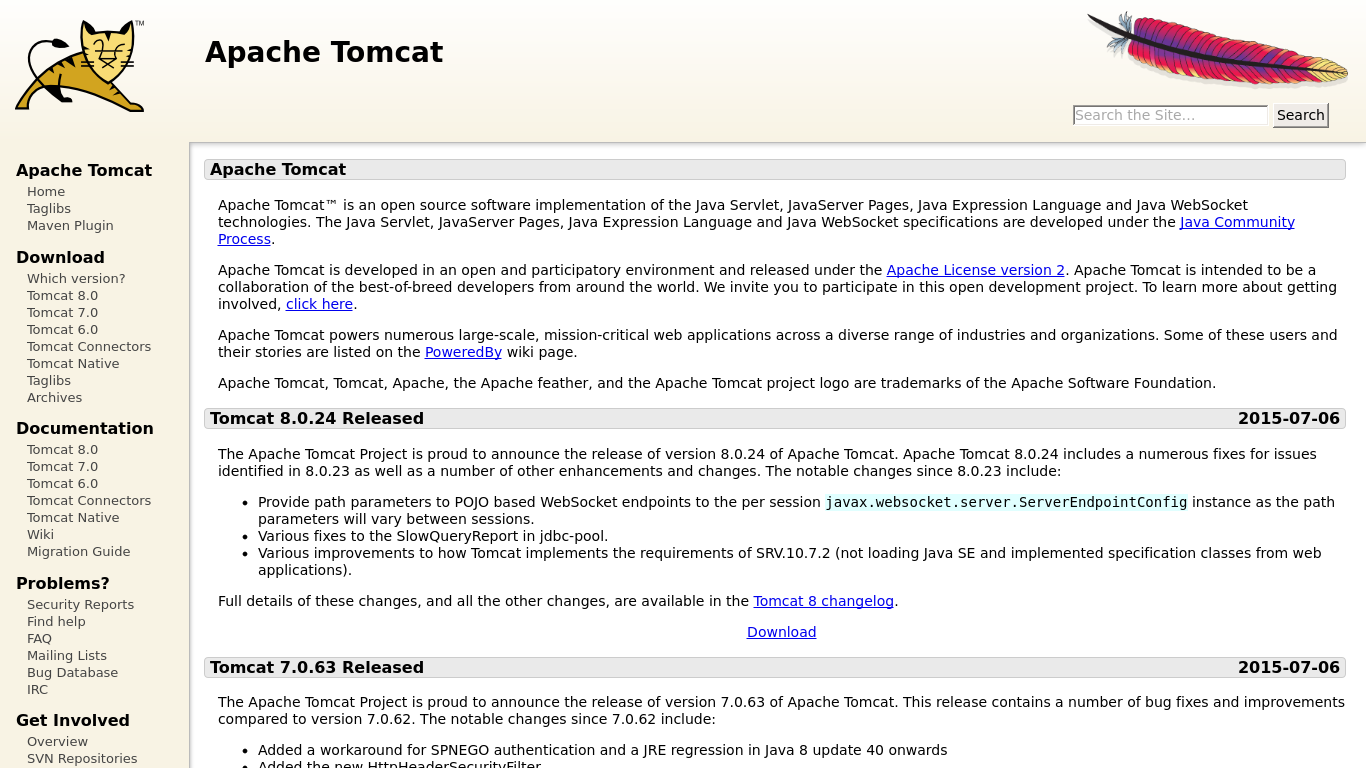
- Apache tomcat exploit how to#
- Apache tomcat exploit archive#
- Apache tomcat exploit software#
- Apache tomcat exploit code#
- Apache tomcat exploit password#
jsp application using a PUT request.The exploit work and now we have a shell on the remote target.As an alternative option for the payload we could have used a meterpreter payload in order to execute more commands on the target instead of a simple shell.

Apache tomcat exploit archive#
war archive and then it tries to execute the. Exploitation of Apache TomcatĪs you can the exploit is uploading the payload as a. We will use the port 8180 instead of 80 because this is the port that the Apache Tomcat is running.Also as you can see it is important to set any valid credentials that you have discovered.
Apache tomcat exploit password#
We can see from the above image that there is an option for username and an option for password to authenticate with the application in order to deliver the exploit.We already have valid credentials for this server from our previous scan so we will use them.The next image is showing how we have configured the exploit. The scanner have discovered valid credentials under the username tomcat and password tomcat.Now it is time to select the appropriate exploit in order to gain access to the remote target through the Apache Tomcat service.The metasploit framework has a specific module which can be used to execute a payload on Apache Tomcat servers that are running the manager application. Discovery Valid Credentials in Apache Tomcat We don’t have to give to give a path for a password list in this module because it is already configured to scan the password from a specific list of the metasploit wordlists.However if we have an appropriate wordlist,bigger than the existing one we can select our own.So we run the scanner and we are waiting to see if it will discover any valid credentials. We have found an auxiliary scanner which will be the tool for our attempt to login to the Tomcat Application Manager.So we are selecting the scanner by using the command use auxiliary/scanner/http/tomcat_mgr_login and then we are configuring it properly as it appears on the next screenshot. Our next step will be to open metasploit framework and to search for specific modules about the Apache Tomcat by using the command search Tomcat. If the AJP connector is not being used in the application, then the vulnerability can be fixed by directly upgrading Apache Tomcat to version 7.0.100, 8.5.51, or 9.0.31.In this article we will focus on the Apache Tomcat Web server and how we can discover the administrator’s credentials in order to gain access to the remote system.So we are performing our internal penetration testing and we have discovered the Apache Tomcat running on a remote system on port 8180. If the AJP connector service is not in use:
Apache tomcat exploit code#
If either is true, then the AJP connector is in use.Īn attacker can execute malicious code and also read sensitive information from the configuration files and source code files of all web applications which run on Tomcat.Īpache has released fixes for this vulnerability in Tomcat.
Apache tomcat exploit how to#
How to check if the AJP connector is used in the server environment?ġ) Check if any cluster or reverse proxy is used.Ģ) Also, check if the cluster or reverse server is communicating with the Tomcat AJP Connector service. The AJP Connector is enabled by default and listens on port 8009. Specifically, Ghostcat vulnerability can be exploited when the AJP Connector is enabled and this allows access to the AJP Connector service port. The default configuration on Apache Tomcat is known to be vulnerable. Disclosure of sensitive data in vulnerable Apache Tomcat serverĪpache Tomcat version 6.x, 7.x before 7.0.100, 8.x before 8.5.51 and 9.x before 9.0.31. The figure below shows the disclosure of data present in the web.xml file on a vulnerable Apache Tomcat Server.įig. This could result in the execution of malicious code.Ī number of researchers have published proofs-of-concept( 1, 2, 3, 4, 5 ) for CVE-2020-1938. An attacker can upload a malicious file, and then include it using the Ghostcat vulnerability. The impact is known to be much severe in cases where the application allows the uploading of files. This flaw allows attackers to read or include any files in the web application directories of Tomcat. Tomcat AJP protocol connector is a component that communicates with a web connector via the AJP protocol. Tomcat AJP is configured with two connectors: HTTP Connector and AJP Connector. Ghostcat, tracked as CVE-2020-1938, was discovered in Tomcat AJP protocol by researchers at Chaitin Tech.


This vulnerability resides in Tomcat for more than a decade now.
Apache tomcat exploit software#
Apache Tomcat is a software used to deploy Java Servlets and JSPs. A critical vulnerability named Ghostcat was recently discovered in Apache Tomcat Servers.


 0 kommentar(er)
0 kommentar(er)
